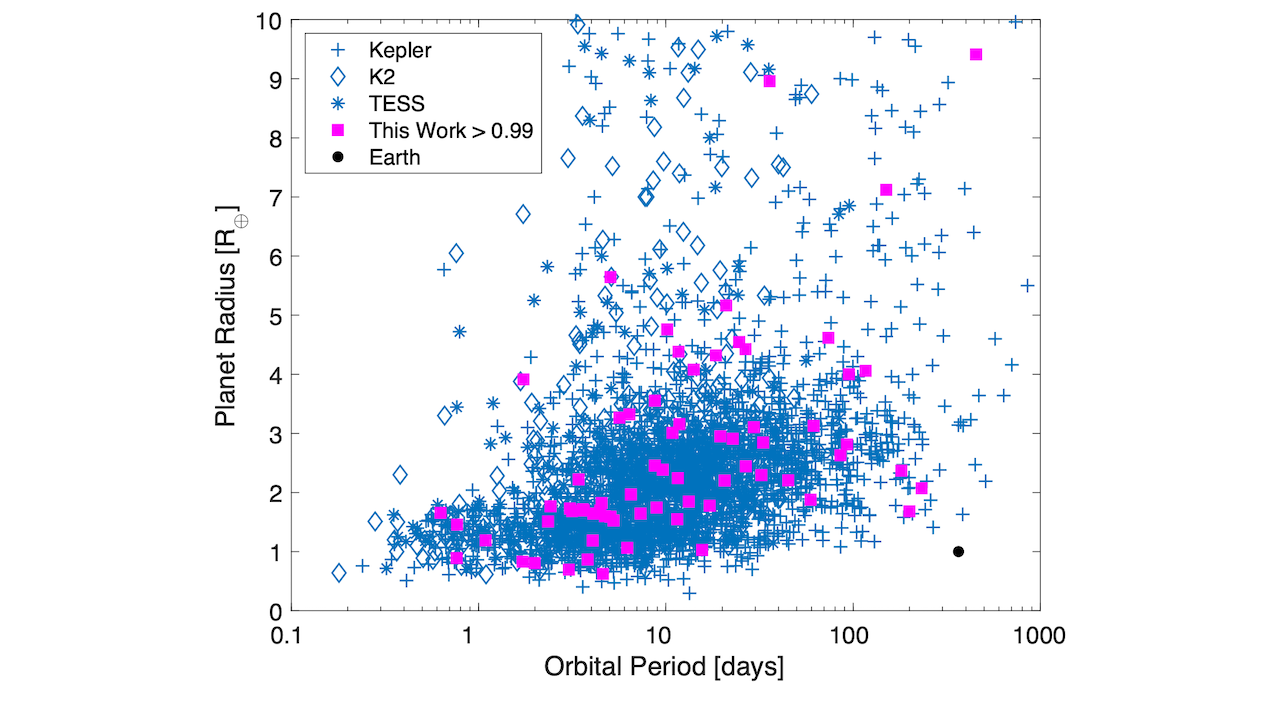Unveiling 69 New Exoplanets Utilizing the Power of Machine Learning

Planet radius vs. orbital period for confirmed tran- siting planets and validated planets in this paper. The CPs are indicated by the discovery source with Kepler indicated by ‘+’, K2 by a diamond ‘⋄’, and TESS by ‘*’. ExoMiner V1.2-boosted validated planets are indicated by a magenta square. For reference, Earth is indicated by a black circle. — astro-ph.EP
A groundbreaking discovery has been made in the realm of exoplanet research, as scientists have identified a remarkable 69 previously unknown exoplanets employing the remarkable capabilities of machine learning. This revolutionary approach has opened up new avenues for exploring and understanding the vast expanse of the cosmos.
Exoplanets, planets located beyond our own solar system, have captivated astronomers for decades, offering glimpses into the potential diversity of planetary systems throughout the universe. With advancements in technology and data analysis techniques, the search for exoplanets has intensified, leading to an ever-growing catalog of these celestial entities.
In this latest endeavor, researchers harnessed the power of machine learning algorithms to analyze vast amounts of observational data collected from space-based telescopes and ground-based observatories. The intricate algorithms were trained to identify subtle patterns and correlations within the data, enabling them to detect the presence of exoplanets.
The machine learning models were fed a wealth of data, including light curves, spectroscopic data, and other relevant parameters collected during observations. Through rigorous training and validation, these models became adept at recognizing the unique signatures and characteristic patterns associated with exoplanet transits and other indicators of their existence.
The result of this innovative approach was the identification of 69 newfound exoplanets, each offering valuable insights into the diversity and distribution of planetary systems. These newly discovered exoplanets span a range of sizes, compositions, and orbital characteristics, adding to the ever-growing knowledge of the cosmos.
The significance of this discovery extends beyond the sheer number of exoplanets found. The utilization of machine learning techniques has proven to be a game-changer in the field of exoplanet research, allowing astronomers to efficiently sift through vast datasets and uncover hidden gems that would have otherwise remained elusive.
The newfound exoplanets will serve as prime targets for further investigation, enabling scientists to delve deeper into their atmospheres, compositions, and potential habitability. By studying these distant worlds, researchers hope to unlock clues about the formation and evolution of planetary systems and unravel the conditions necessary for life to thrive.
As the field of exoplanet research continues to evolve, machine learning algorithms will undoubtedly play an increasingly vital role in uncovering and characterizing these intriguing celestial bodies. The ability to process massive amounts of data and identify subtle patterns will empower scientists to push the boundaries of our understanding of the universe and unravel the mysteries of exoplanetary systems.
This remarkable discovery stands as a testament to the power of machine learning and its transformative impact on the field of astrophysics. By combining human ingenuity with the computational prowess of artificial intelligence, we are poised to explore uncharted territories and unravel the secrets of the cosmos like never before.
Source: Astrobiology
Comments
Post a Comment